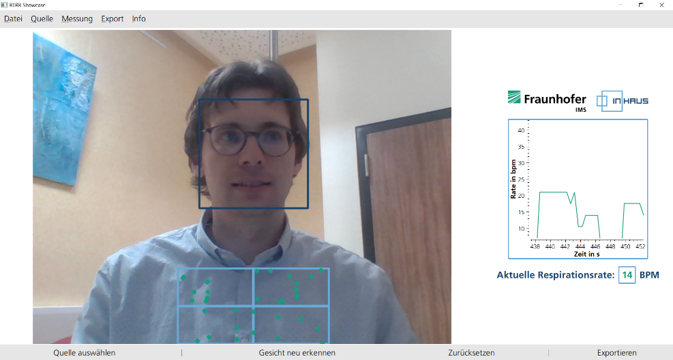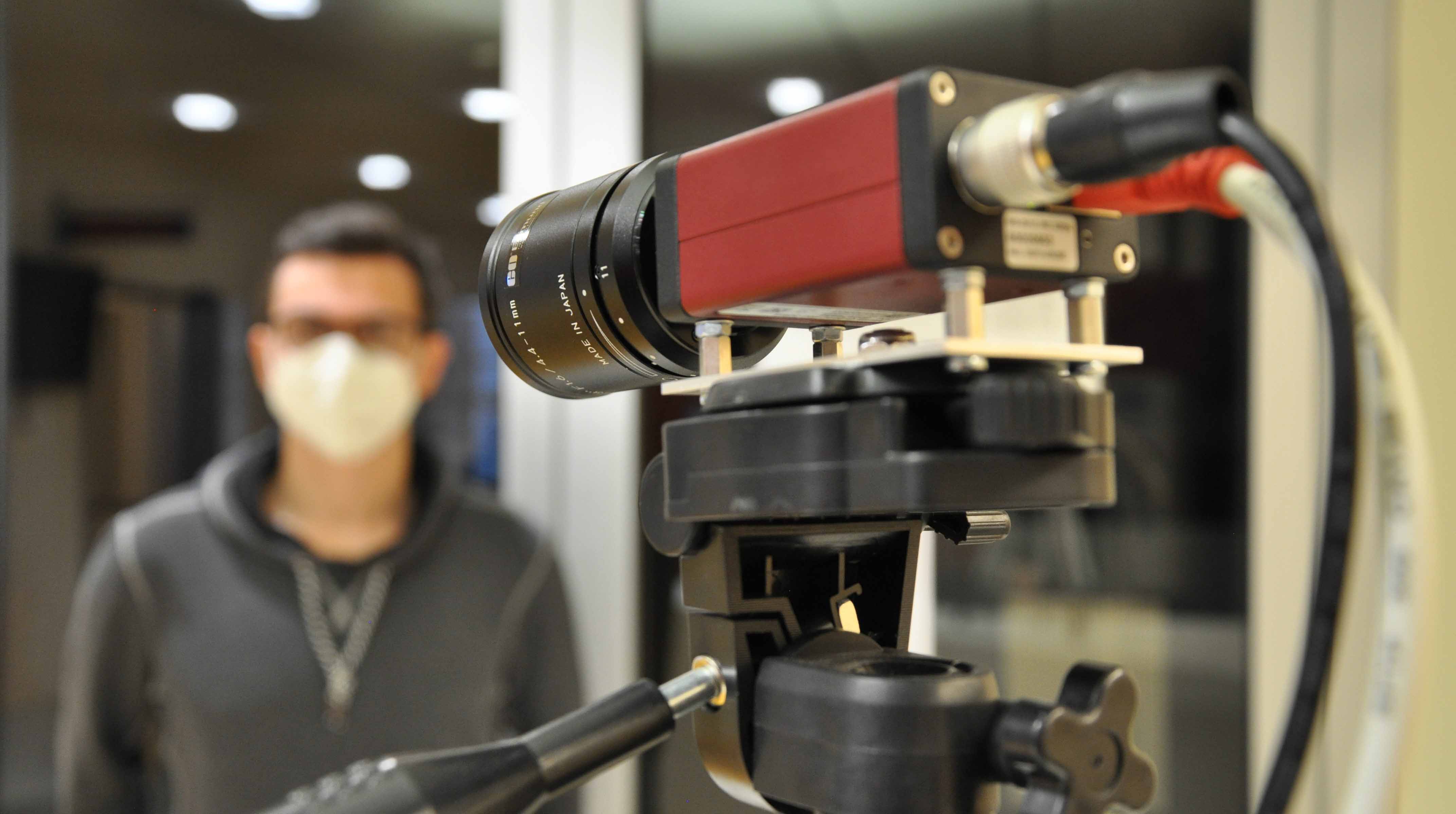- Heart rate
- Respiration rate
- oxygen saturation
- blood pressure
- blood glucose
Various methods from image processing and signal processing are used to perform contactless vital sign measurement with different optical sensors. In particular, the use of neural networks for detection represents an important research focus. Together with partners from industry and medicine we are transferring our visions of health monitoring with the help of contactless vital parameter measurement to series production readiness.
There is a wide range of possible applications for a contactless vital sign measurement:
- Screening in hospitals
- Access controls to exclude people with symptoms of disease
- Health monitoring in the field of Ambient Assisted Living (AAL)
- Training monitoring in rehabilitation
- Driver monitoring on the road to autonomous driving
- Marketing research
- Sleep lab
One application, access control in hospitals, will be described in more detail below:
One of the most effective measures to contain the current COVID-19 pandemic is social distance and isolation of infected people. Particularly at the entrance to hospitals, where many sick and debilitated people congregate, physical separation of SARS-CoV-2 infected people from other patients, doctors, and nurses is essential.
Since the evaluation of laboratory tests to detect the virus still takes far too long, the main symptoms of COVID-19, fever and shortness of breath, must be analyzed to identify potentially infected patients. While fever can be measured easily and contactless with an infrared camera, there has been no comparably simple measurement system for analyzing the respiratory rate so far.


